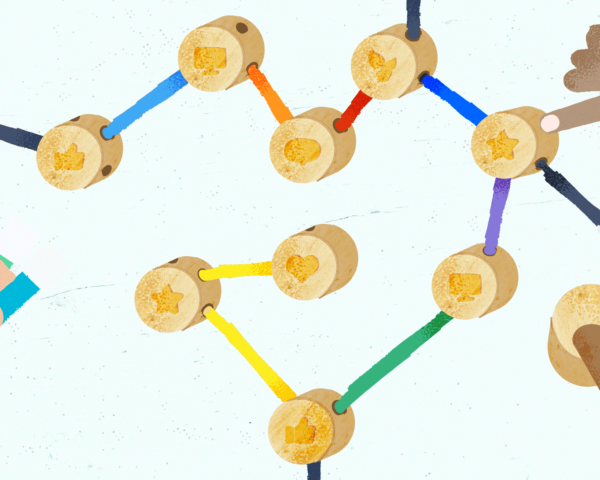No jerks allowed
How one company’s commitment to culture supports people and profits.
An organization’s corporate culture can make or break its success, and not just in measurable terms of profits and headcount. An enterprise that’s successful on paper can still suffer at the hands of a bad reputation. So, beyond your business’ bottom line, how do you make people want to work for your company?

Like so many long-established firms, CARFAX, which boasts the largest vehicle history database in the world, began its corporate journey with operations, engineering, and management functioning as independent departments, more or less following a traditional command-and-control approach. But as the company expanded their offerings and increased their staff, they outgrew their tools and organizational conventions. Recognizing these shortcomings, they pivoted to a more customized and decentralized model, driven by their commitment to a distinctly human company culture. It’s helped the company resolve issues faster on a daily basis, innovate on a larger scale, attract and retain loyal employees, and maintain a competitive advantage.
After joining CARFAX in 2008, CIO Phil Matthews set out to overhaul its working model and job functions to align with this emerging cultural shift. Phil’s role as CIO of US Airways, followed by a stint at ServiceBench, established a strong background in scaling technology organizations, and fostered an inclination toward the human side of organizational leadership. At CARFAX, Phil approached hiring with an eye toward collective accomplishment and empathetic employees. Designers, product managers, project managers, and technology specialists are integrated into teams that are each responsible for the success of their products, projects, and employees. “These four roles are referred to informally as ‘boat leaders,’” Phil says. “They’re peers in the boat who all have to be rowing in the same direction.” The organization doubled down on the benefits of cooperative work and diverse perspectives, crystalizing a cultural identity that prioritizes collaboration and transparency over egos and silos.
The secret to driving company success
So how do you create a more transparent, collaborative culture that unlocks your employees’ and business’ potential? How do you balance the empowerment of your people with ownership and flexibility, while still maintaining control? Here are three key guiding principles of CARFAX’s culture that have helped them become a sought-after employer and stay competitive in a fast-changing industry.
1. Humility
Fostering a culture of trust and openness begins before employees are even hired. At CARFAX, leaders tell candidates that they’re looking for people who are humble, team-oriented, and sensitive to the balance between freedom and governance. Setting these expectations during the hiring process helps weed out people who aren’t the right fit.
“We don’t bring people with large egos into the company, or folks who are looking to achieve a certain title – and will get frustrated when they don’t,” Phil explains. “We are very upfront with candidates while interviewing them, explaining the nature of our relatively flat organization – just four levels of management – that we have no title prefixes, no ‘senior’ this or ‘executive’ that, and that mobility and growth at CARFAX happen more via a lattice than a ladder.”
Director of Project Services Aaron Hall adds: “We look for people who bring different experiences and capabilities. We trust them to have CARFAX’s best interests in mind, and then we let them loose.”
2. Wisdom of crowds
When employees are involved in company processes, they’re more likely to buy in to its value and take ownership of the results. So CARFAX invites the whole company to participate in select strategic planning processes, then empowers everyone to execute and reach corporate objectives on their own terms.
President Dick Raines makes annual visits to offices around the world to present the company’s corporate strategy for the coming year. Employees then vote on the initiatives they feel strongly about. The highest ranked initiatives become annual corporate objectives.
This collective intelligence goes deeper than just a one-time event, though – it’s a part of everyday life for employees. For example, one of CARFAX’s values is the “wisdom of crowds,” which encourages free-flowing feedback between peers. This helps people feel heard and know their opinion matters. Project Manager Alison Clough says: “It may take more time, but we find there’s more value in allowing people to get their thoughts out and get buy-in on their ideas.”
3. Visibility
Good companies document their values and culture. Great companies evangelize those values and use them as a lens for decision-making.
CARFAX aligns their stakeholders around shared values and goals. This well-defined culture is embodied in their Playbook, which is front and center on their Careers website; potential job candidates know exactly what they’re getting into. The company doesn’t hide who they are, what they believe in, or how they play. There are “no jerks allowed” – just straight shooters with open minds and a team-oriented approach.
Phil says that his team invokes their Playbook in their everyday work and stays focused on the goals they all voted for. These corporate objectives are also visible in every conference room around the world so employees can reference the objectives during meetings and make sure their decisions are aligned with company strategy.
By making their values and goals visible at all times, CARFAX hopes to attract the right people and keep them focused on the right priorities.
The proof is in the profits – and the people
Transparency and collaboration don’t just feel better; they work better, for both employees and the business.
“Last year was amazingly successful on the product delivery front and financial front,” Aaron says. “Some of that was definitely due to our leadership and our team’s hard work. But it was also made possible by evolving our culture, structure, practices, and tools.”
CARFAX’s business success has indeed boosted the company’s headcount. But while adding staff is great, keeping staff is an even bigger win. Thanks in large part to an all-encompassing company culture, CARFAX has done both. The technology team has grown over 130% in the past ten years, while maintaining an unheard-of retention rate of more than 90%.
Employees love working at CARFAX, and they’re not afraid to brag about it. The company has earned tons of “Great Places to Work” and “Top Workplace” awards from The Washington Post, The Washingtonian, Glassdoor, and more. And Aaron says it’s all because of – you guessed it – their unassailable culture. “We have a comically low turnover rate because people who have been around the block recognize how special it is.”
Culture shifts don’t happen overnight. They’re difficult, they’re uncomfortable, and they may feel risky. But as companies like CARFAX have seen, the results are worth it. With happier people and higher metrics, it’s clear that being open isn’t a way to be. It’s the way to be for future-focused businesses.











































